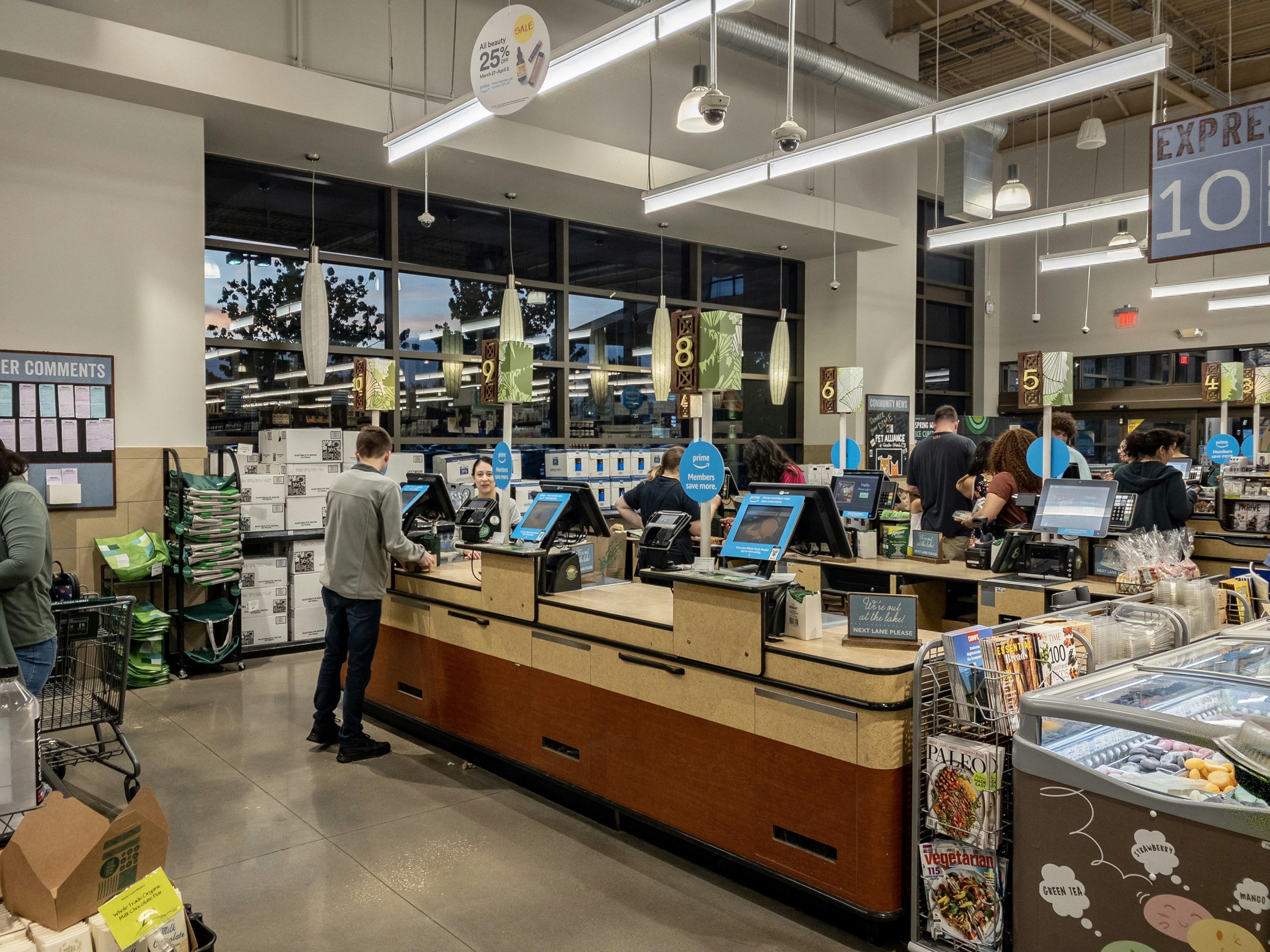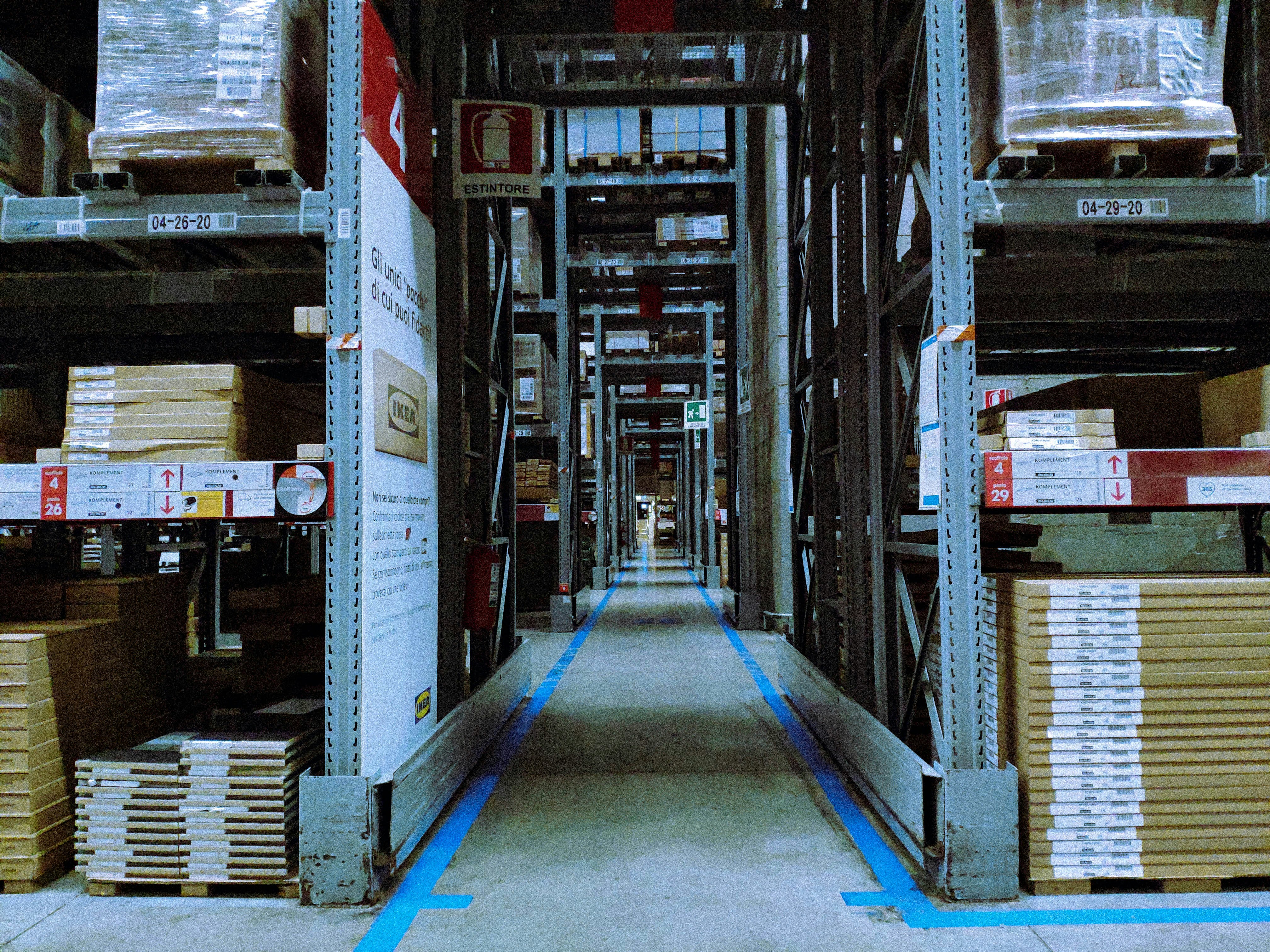Introduction to RFID and Barcodes
Radio Frequency Identification (RFID) and barcodes are both prominent technologies utilized for inventory tracking and management across diverse industries. While they serve a similar purpose in tracking assets, their methodologies and efficiencies vary significantly. RFID utilizes electromagnetic fields to automatically identify and track tags attached to objects, whereas barcodes employ a series of parallel lines that can be scanned to obtain information. This fundamental difference underscores the unique advantages and challenges of each technology.
Barcodes, having been in use for decades, are an established solution for inventory tracking. They are cost-effective to implement and require only minimal equipment, such as barcode scanners. The simplicity of barcodes makes them an appealing choice for businesses that operate with straightforward tracking needs. However, they require a direct line of sight for scanning and can become inefficient when large volumes of items must be processed quickly.
On the other hand, RFID technology offers several advantages over traditional barcode systems. RFID tags can be read from a distance, and multiple tags can be scanned simultaneously without the need for a direct line of sight. This can significantly streamline inventory processes, reduce labor costs, and improve data accuracy. As a result, RFID is increasingly being adopted in sectors such as retail, logistics, and healthcare, where efficiency and precision are paramount.
The importance of both RFID and barcodes cannot be understated, as each technology plays a critical role in optimizing supply chain operations. Companies must carefully consider their specific tracking requirements, budget constraints, and operational complexities when choosing between RFID and barcodes. Understanding the core functionalities of each technology sets a foundation for deeper exploration into their respective benefits and limitations.
Understanding RFID Technology
Radio Frequency Identification (RFID) technology utilizes electromagnetic fields to automatically identify and track tags attached to objects. An RFID system is composed of three primary components: tags, readers, and antennas. RFID tags are small electronic devices that consist of a microchip and an antenna, enabling the storage of data and the transmission of this data wirelessly. There are two main types of RFID tags: passive and active. Passive tags obtain their power from the RFID reader’s interrogating signal, while active tags are powered by an internal battery, allowing them to broadcast signals over longer distances.
RFID readers, also known as interrogators, are devices that emit radio waves to communicate with RFID tags within range. They interpret the signals returned from the tags, allowing for the reading and processing of the stored information. The antennas play a crucial role in facilitating communication between the tags and the readers by transmitting and receiving radio frequency signals. The efficiency of this system depends significantly on the type of antenna used and its placement.
There are several types of RFID systems: active, passive, and semi-passive. Active RFID systems are typically used for tracking high-value assets in extensive areas, such as shipping containers in logistics. Passive RFID systems are more commonly applied in retail and inventory management due to their lower cost and ease of implementation. Semi-passive RFID combines benefits from both active and passive systems and can be advantageous in applications such as healthcare, where monitoring of medical equipment is essential. Each type of RFID system serves various sectors, providing effective solutions for asset tracking, inventory management, and enhancing operational efficiencies.
Understanding Barcode Technology
Barcode technology is a method used to encode data in a visual format that machines can read. At its core, a barcode consists of a series of lines, spaces, and patterns that represent numerical or alphanumeric data. The most commonly recognized types of barcodes are one-dimensional (1D) and two-dimensional (2D) versions. 1D barcodes, typically found in retail and inventory applications, are designed to hold a limited amount of information, usually presenting numerical values. Examples include the Universal Product Code (UPC) and Code 128, which are prevalent in product labeling.
On the other hand, 2D barcodes, such as Quick Response (QR) codes and Data Matrix codes, are capable of storing significantly more information due to their two-dimensional nature. This allows them to contain various kinds of data—from URLs and contact details to full product descriptions. The modern landscape of barcode technology has expanded significantly thanks to advancements in scanning and interpreting these tags, which has resulted in broader applications across several industries including retail, healthcare, logistics, and manufacturing.
The process of scanning a barcode involves using a barcode scanner that emits a light source onto the barcode, which reflects back the light in a specific pattern. The scanner captures this reflected light and decodes it into a digital signal that corresponds to the original information encoded in the barcode. This simple yet effective system enhances inventory management and point-of-sale processes by enabling quick and accurate data retrieval and recording.
Historically, barcodes made their debut in the 1970s and have since become indispensable in commercial and industrial settings. Their use has increased dramatically over the decades due to their reliability and accuracy in data capture, making barcode technology a crucial element in the evolution of inventory and supply chain management systems.
Key Differences Between RFID and Barcodes
RFID (Radio-Frequency Identification) and barcodes are two distinct technologies used for tracking and managing inventory. Although they serve similar purposes, there are several key differences that can affect their suitability for various applications. Understanding these differences is crucial for organizations aiming to optimize their inventory management processes.
One of the most significant differences between RFID and barcodes is the scanning range. RFID systems can read tags from a considerable distance, often up to several meters, depending on the tag type and reader. In contrast, barcodes require a line-of-sight for scanning, meaning that the scanner must be directly facing the barcode for it to be read, typically limited to only a few inches.
Another crucial aspect is the data storage capacity. RFID tags can store a substantial amount of information compared to barcodes. While a standard barcode can only hold up to a few dozen characters, RFID tags can contain information such as serial numbers, product details, and even location data. This ability to store more data enhances the functionality of RFID for complex inventory systems.
The read speed is also an essential differentiator. RFID can process multiple tags simultaneously, enabling quick inventory counts or real-time tracking as items move past a reader. In contrast, barcodes are read one at a time, which can slow down operations in high-volume environments.
To provide a clearer visual comparison, the following table outlines the pros and cons of each technology:
| Feature | RFID | Barcodes |
|---|---|---|
| Scanning Range | Multiple meters | Line-of-sight required |
| Data Storage Capacity | High | Low |
| Read Speed | Fast (multiple tags) | Slower (one at a time) |
| Cost | Higher | Lower |
These differences highlight the contexts in which RFID or barcodes may be more advantageous for inventory and supply chain management, helping organizations make informed decisions that align with their operational needs.
Advantages of Using RFID Over Barcodes
Radio Frequency Identification (RFID) technology offers several advantages over traditional barcode systems, making it a preferred choice in various applications, particularly in inventory management and operational efficiency. One of the primary benefits of RFID is automation. RFID systems can automatically capture data without requiring direct line-of-sight as is essential with barcodes. This capability allows for quicker scanning of items, significantly reducing the time spent on inventory counts and item retrieval.
Accuracy is another key advantage of RFID. RFID technology minimizes human error, which is often a concern with manual barcode scanning. By utilizing automated readers, businesses can achieve greater data accuracy, leading to fewer discrepancies in inventory records. This increased reliability in tracking assets ensures efficient operations and enhances customer satisfaction by preventing out-of-stock situations.
Moreover, RFID enables real-time tracking of items. Each RFID tag can provide instant updates regarding the location and status of products throughout the supply chain. This feature allows companies to make informed decisions promptly, enhancing responsiveness to market demands and streamlining logistics.
Durability is a significant factor in choosing RFID over barcodes. RFID tags are designed to withstand harsh environments and can be encapsulated in materials that protect them from physical damage, dirt, and moisture. This resilience extends the useful life of inventory tracking systems, ensuring long-term viability and reducing replacement costs.
Another compelling advantage of RFID technology is its capacity to read multiple tags simultaneously. While barcode scanners typically scan one item at a time, RFID readers can identify hundreds of tags within seconds, facilitating inventory management processes and making transactions more efficient. Businesses that leverage these capabilities witness marked improvements in operational workflows, leading to enhanced performance overall.
Situations Where Barcodes Are More Suitable
In the realm of inventory management and tracking, there are distinct situations where barcodes prove to be more advantageous than RFID systems. One primary consideration is the cost factor. Barcodes are generally more affordable to implement due to their simplicity and the lower cost of the printing technology involved. For small businesses or operations with budget constraints, utilizing barcodes can be a highly effective means of tracking products without incurring the additional expenses that RFID tags and readers may require.
Additionally, the simplicity of barcode systems makes them ideal for scenarios where speed and ease of use are prioritized. In retail environments, barcodes can quickly be scanned at checkout, facilitating smooth transaction processes. For instance, grocery stores often utilize barcodes on products as they enable rapid scanning, reducing wait times for customers and improving the overall shopping experience. Here, the straightforward nature of barcodes offers efficiency without the need for complex infrastructure that RFID systems demand.
Moreover, industries with established barcode systems may prefer to continue using them rather than transitioning to more advanced RFID technology. Manufacturing settings that have successfully integrated barcodes into their processes might find it unnecessary to switch to RFID, particularly when there’s no significant added benefit. The existing infrastructure allows for easy adaptation and maintenance, making barcodes a pragmatic option. In warehouses, barcodes can assist in organizing inventory and tracking shipments effectively, as workers are already accustomed to their use.
Ultimately, while RFID technology presents an innovative approach to inventory management, there are numerous scenarios where barcodes are not only sufficient but may also be the more logical choice. Their cost-effectiveness, simplicity, and compatibility with existing systems continue to make barcodes a reliable option in various industries.
Cost Considerations: RFID vs. Barcodes
The decision to implement RFID (Radio Frequency Identification) or barcode systems is heavily influenced by cost considerations. Initially, RFID technology typically requires a higher investment compared to traditional barcodes. The expense encompasses not only the tags but also the necessary hardware, such as RFID readers and antennas, along with the software for managing the data collected. In contrast, barcodes necessitate a more modest initial outlay, as they consist of simple printed labels and readily available scanners. However, it’s essential to assess these upfront costs in the context of their ongoing expenses and the long-term benefits derived from each system.
Ongoing maintenance costs also vary significantly between RFID systems and barcode systems. RFID systems may incur higher costs related to tag replacement and potential software updates. Moreover, the readers and infrastructure may require regular maintenance to ensure optimal performance. Conversely, barcodes, while less expensive to install, can encounter costs related to label printing and scanner maintenance. Considering these factors, businesses must evaluate the total cost of ownership for both options rather than just the initial investment.
When analyzing the potential return on investment (ROI), companies must consider both tangible and intangible benefits. RFID systems can lead to substantial long-term savings through improved operational efficiency. For example, RFID technology enables faster inventory tracking with reduced labor costs, minimized human errors, and enhanced accuracy in inventory management. These efficiencies can translate into significant financial gains over time. In comparison, barcode systems, while still effective, may not offer the same level of operational efficiencies or time savings, potentially limiting their ROI in fast-paced environments.
Ultimately, careful analysis of the costs associated with RFID and barcode systems will allow businesses to make informed decisions based on their specific needs and operational goals. Embracing either technology requires thorough consideration of both immediate expenditures and future savings to ensure a viable investment.
Implementation Challenges and Considerations
While Radio Frequency Identification (RFID) technology offers numerous advantages over traditional barcode systems, its implementation is not without challenges. Businesses that consider migrating to RFID from barcodes must address several key considerations to ensure a smooth transition and successful deployment.
Technical integration is one of the most significant hurdles. Unlike barcodes, which are relatively straightforward to implement, RFID systems require a more complex setup involving specialized hardware and software. Businesses need to ensure that their existing systems can integrate with new RFID readers and tags, which may necessitate updates to legacy systems or the adoption of entirely new software solutions. This integration requires careful planning and coordination between IT departments and RFID vendors to align workflows and streamline operations.
Another critical aspect is staff training. Employees accustomed to using barcodes may need comprehensive training to understand and operate RFID technology effectively. This training should cover not only the operational aspects of using RFID systems but also the benefits they bring. Adequate training reduces the likelihood of errors and enhances employee confidence when utilizing new technologies, contributing to a successful implementation.
System compatibility is also a vital consideration; not all RFID systems are compatible with every enterprise application. Companies must assess their inventory management, logistics, and other systems to ensure that RFID technology seamlessly aligns with existing processes. A lack of compatibility can lead to inefficiencies that counteract the benefits of adopting RFID.
Lastly, data security measures must be addressed. RFID systems can be susceptible to unauthorized access and data breaches, making it essential to implement robust security protocols. Establishing encryption, secure data transmission methods, and access controls will help protect sensitive information as businesses leverage the advantages of RFID technology.
Conclusion: Making the Right Choice for Your Business
In evaluating whether to implement RFID technology or traditional barcodes, businesses must consider a variety of factors that are crucial to their operational requirements. Throughout this guide, several key points have been discussed to aid in this decision-making process. RFID offers significant advantages such as improved inventory management, faster data capture, and enhanced visibility throughout the supply chain. However, barcodes remain a cost-effective, straightforward solution for many businesses, particularly those with simpler tracking needs.
When deciding between RFID and barcodes, organizations should begin by assessing their specific operational requirements. For instance, if a business requires high-frequency scanning of multiple items in one go—such as in retail or warehousing—RFID may provide the efficiency needed for streamlined processes. Conversely, businesses with lower volume or less complex tracking demands might find that barcodes suffice, offering an economical approach without sacrificing functionality.
It is also essential to analyze the associated costs of equipment, tags, and ongoing maintenance for both RFID and barcodes. While RFID systems can entail higher initial investment, the long-term benefits such as reduced labor costs and improved accuracy can justify the expenditure. Budget constraints will play a critical role in determining the best fit for each organization.
Furthermore, it is advantageous for businesses to consider scalability. As organizations grow, their tracking requirements may evolve, necessitating a flexible solution that can adapt over time. Therefore, conducting a thorough analysis of current and anticipated needs, alongside budgetary considerations, will guide businesses in making an informed choice between RFID and barcodes, ensuring optimal efficiency and return on investment.
© barcodly.com- All rights reserved





